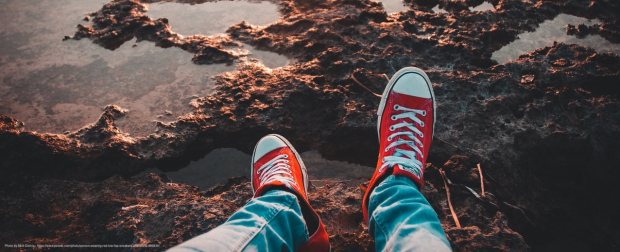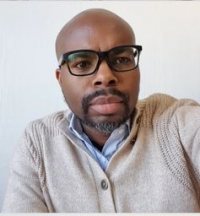
December 2021
This month's voice:
Melvin Dixon, Lessons in Mud
Introduction
Lindsay Herron
Editor, KOTESOL Voices
This month, KOTESOL Voices is delighted to share the perspectives of long-time Seoul Chapter member Melvin Dixon! His beautifully crafted piece below is an engaging meditation on expectations, reframing perceptions, and the pursuit of joy that will undoubtedly resonate with many of us—especially now, as we look back on the past twelve months and forward to the coming year. As you read it, I hope you find yourself as I did: connected, inspired...and critically contemplating the mud in your own life. Happy reading!
Lessons in Mud
Melvin Dixon
I started at my current job 11 years ago. To get to the interview, I headed southeast away from Seoul to the next-to-last stop on subway Line 4 on a dark and snowy day. A few days later after accepting the offer, I looked again at a map to remind myself that not only did I have a new job, but the new job was near the coast. I loved Seoul, but I had moved to Korea from a coastal town, and I had spent a large portion of my life living near the ocean. Now I had that opportunity again. I was looking forward to early morning runs and late-night walks with the sea just over my shoulder.
As my start date drew closer, I woke up early one day and jumped on the subway, heading in the direction of my new school to search for a place to live near the sea or—with a great deal of luck—a place with a view of the sea. I finished the long subway ride, took a bus or two, and got off in Oido. Oido is a sleepy little neighborhood that had once been an island. I decided to walk around and scope out the area before visiting a real estate office. Seafood restaurants pressed against each other block after block, with a few cafes sprinkled about. Villas, three and four stories high, were the main form of housing. There was also an elevated sea wall with a walkway that traced the outline of the bay. I climbed the stairs to the top of the sea wall.
The first thing I noticed was several clusters of fishing boats that all looked empty of fishermen and of fish, though not of stories. When I looked closer, I noticed that the boats were laying at odd angles, tilted this way and that. None of them swayed or bobbed up and down as they floated in the water of the West Sea…because there was no water. There was mud. Lots of mud. Slimy, dark mud with crevices and craters digging through it. The blue, green, or even yellow-brown water that I had imagined wasn’t there. I knew what tides were and how they worked, but I wasn’t expecting what I saw. Later, when I visited real estate offices, I wasn’t shown any places with a view of the sea. All the units I was shown were in buildings on streets that could have been found in almost any neighborhood in Korea. But more than that, the thought of waking up in the morning and looking out across a sea of mud was not interesting to me, even if the changing tides meant it wouldn’t be like that every day. But also, if I was going to live on a street that looked much the same as the streets where I was already living at the time, maybe it was best to stay in Seoul and commute an hour each way.
People would occasionally ask where I worked and later find out how far I lived from work, and I would eventually get around to telling the story of how lucky I was the tide was out on the day I went apartment hunting in the small seaside neighborhood. I would chuckle at the possibility that I could’ve gone there on a bright, sunny day when the light sparkled and shone in my eyes from the surface of the sea. It could’ve been a day when boats zoomed in and out of the docks and the breeze carried salty air that filled my lungs with each breath—a feeling that I had missed. I could’ve woken up in my new apartment for a sunrise jog and been greeted with the surprise of a sloppy and sad mud background.
Over the years, I got more acquainted with the area, eating in some of the restaurants and relaxing in some of the cafes. My dislike for the mud didn’t change, though. Once I went kayaking nearby, and I didn’t time my trip very well with the tides. I had to end the paddling portion of the trip earlier than I had intended. I was forced to trudge my way back, pulling the kayak behind me through mud that was like black quicksand threatening to steal my shoes and more with each step. My dislike for the fields of mud grew from dislike to contempt.
This past summer, though, I visited a pizza place in Daebudo, an island in the area. I walked to the third-floor rooftop of a building that sat atop a hill. The view from there was panoramic. The view directly in front of the building was of the sea—or rather, at the time I was there, the view was partially the blue sky, partially the sea, and mostly the cursed mud. On that sun-filled August day, the depressing black mud could have absorbed all of the horizon. But this was peak vacation season, and the mud was filled with people: families, children, mothers, fathers, friends, and more squishing and splashing through the mud. They were digging and pulling, talking and laughing, pointing and planning new digs. It was a lively and vibrantly colored scene. And although the only colors were on the people’s clothing and the buckets, toys, and tools they carried, it was the dark, sloppy mud that had bought them all there.
The pits of mud that had bothered me so much were a source of joy for so many people. Their enthusiasm and appreciation of the mud forced me to reconsider. Now, when the tide is out and the mud appears, I can’t look at it without seeing all those people scampering about having so much fun. I can’t help but see the crabs, clams, and other creatures that live in the mud and remember how the mud makes all that life possible.
In a similar way to the kids digging with their plastic shovels, I also have learned and relearned a few lessons from the mud:
- What am I disregarding that other people find valuable? Acknowledging others’ interests even if they differ from my own helps to build better relationships.
- What am I ignoring or failing to notice that brings joy to others? These things may do the same for me. Even if they don’t prove a source of joy for me in and of themselves, seeing people enjoy things and experiences is often enjoyable.
- Trust other people’s ideas and beliefs. There will be no point in my life when I can’t learn from others. It is nice to have reminders of this.
Who knows? Next summer, I may find myself in the mud, enjoying it along with the others.
About the Author

Melvin Dixon moved to South Korea in 2006. He recently moved closer to the muddy tidal flats near Korea’s west coast. He currently works at Gyeonggi University of Science and Technology, where he teaches and works in the Global Education Center, preparing students for work and study abroad.


